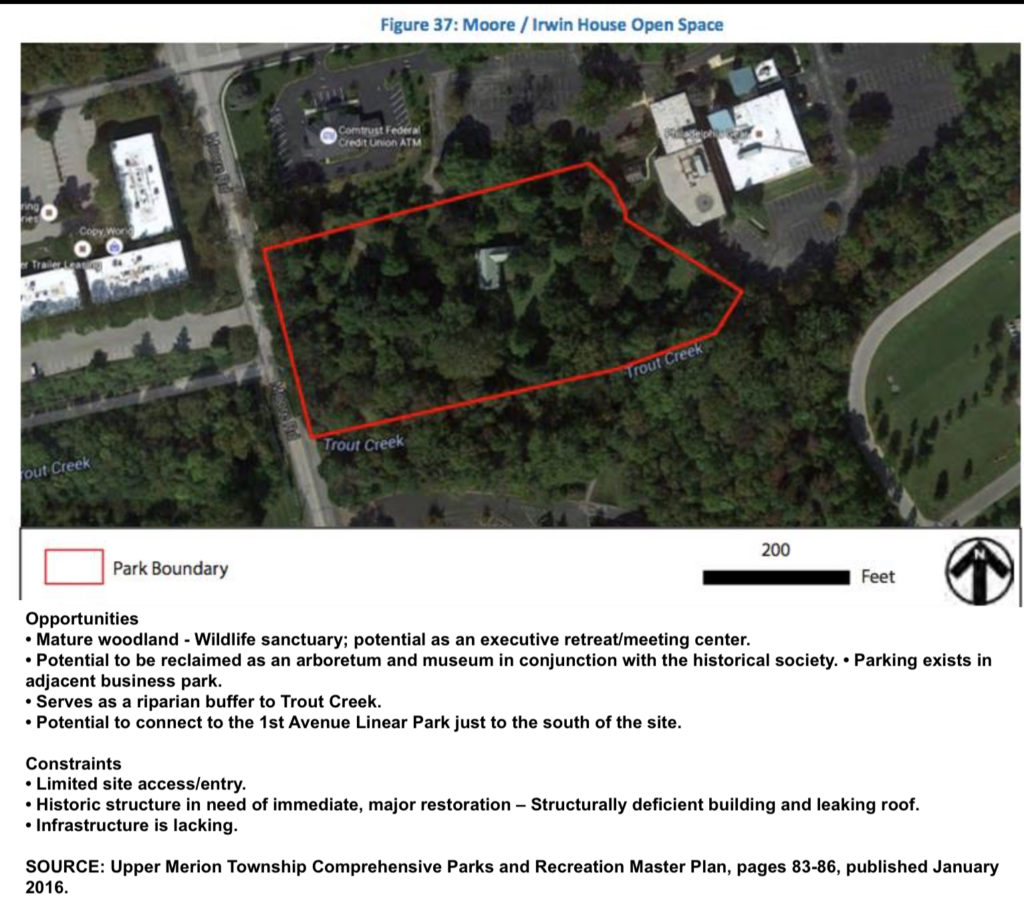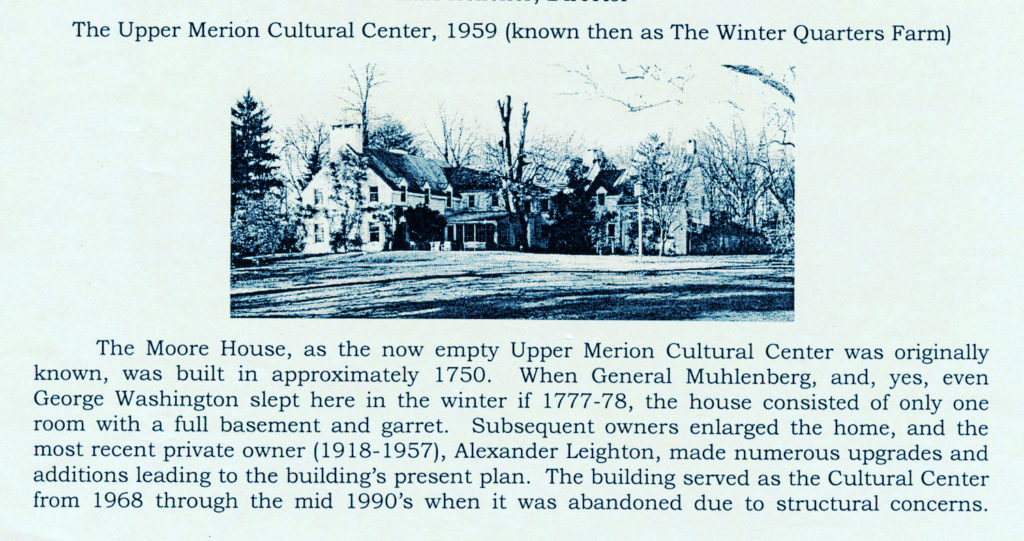By Beth Ann Twiss, Muhlenberg’s Headquarters Historian
June 12, 1979
[Please note that this version of the history of the house is outdated. The history of the house has been updated with new information on this page: https://www.kophistory.org/moore-irwin/]
On December 12, 1777, the Continental Army took up winter quarters at Valley Forge. In desperate need of housing, the soldiers built huts and the generals moved in with area farmers. Brigadier-General Peter Muhlenberg of Virginia was assigned to live in this house with the Moore family of eight.
However, in the eighteenth century, this house was not the large, rambling one of today. Rather, it was a small, one-room building with a basement, attic, and two fireplaces. But, because it was at the eastern edge of the Valley Forge encampment, it was used. Muhlenberg lived here from December to May with the exception of the month of January when he visited his own home in Virginia. In fact, he departed on January 1, the day John Moore died.
Consequently, the widow, Jane, entertained Muhlenberg that spring. On July 31, 1787, she had an even more prestigious guest, though. General George Washington stayed here and fished in Trout Run as a vacation from the Constitutional Convention in Philadelphia.
The exact construction date of the original house is unknown. However, John Moore purchased Upper Merion land in 1709, and the house was probably built by mid-century by one of the first three generations of John Moores. (The first house is the first floor room in the section with the three small windows under the roof. The large fireplace is the original, and there was probably a bake oven to the right. The remnants of the winding staircase to the attic are by the basement steps.) Between 1798 and 1823, Richard, who inherited the house after the Revolution, added a second and third floor above his room.
Then he also added a large, fashionable section to the west (toward the road) and reconverted the third floor into an attic, thus creating the small eye-brow windows now seen under the roof. The house remained this size until 1932.In the twentieth century, the house passed out of the Moore family and became a summer residence for three wealthy families – the Poths, the Binns, and then the Irwins. It was Alexander Irwin who named the estate (The Winter Quarter’s Farm) and altered the house to its present state. He added the wing toward the creek in 1932 and the section farthest from the road in 1946. Irwin also constructed many outbuildings, a few of which still remain.
Actually, it is fortunate that any bit of this historic house remains, for in 1957, it was sold to Cabot, Cabot, and Forbes for the King of Prussia Industrial Park. Luckily, though, this house and its property were left alone until the Upper Merion Cultural Center began to lease the building in 1968. Consequently Upper Merion Township bought the house and designated the land an arboretum because of the variety of trees planted by Irwin. There, the house is again able to serve the public – not by housing a General, but by housing the Upper Merion Community Center and its myriad of activities.
Why so much attention on the Moore Irwin property? Because as 2019 comes to a close, this historic building still sits neglected awaiting the attention it deserves. Communities that value their past make it a priority with the financial investment to preserve it. Upper Merion still has a chance to prove it has a commitment to preservation.


